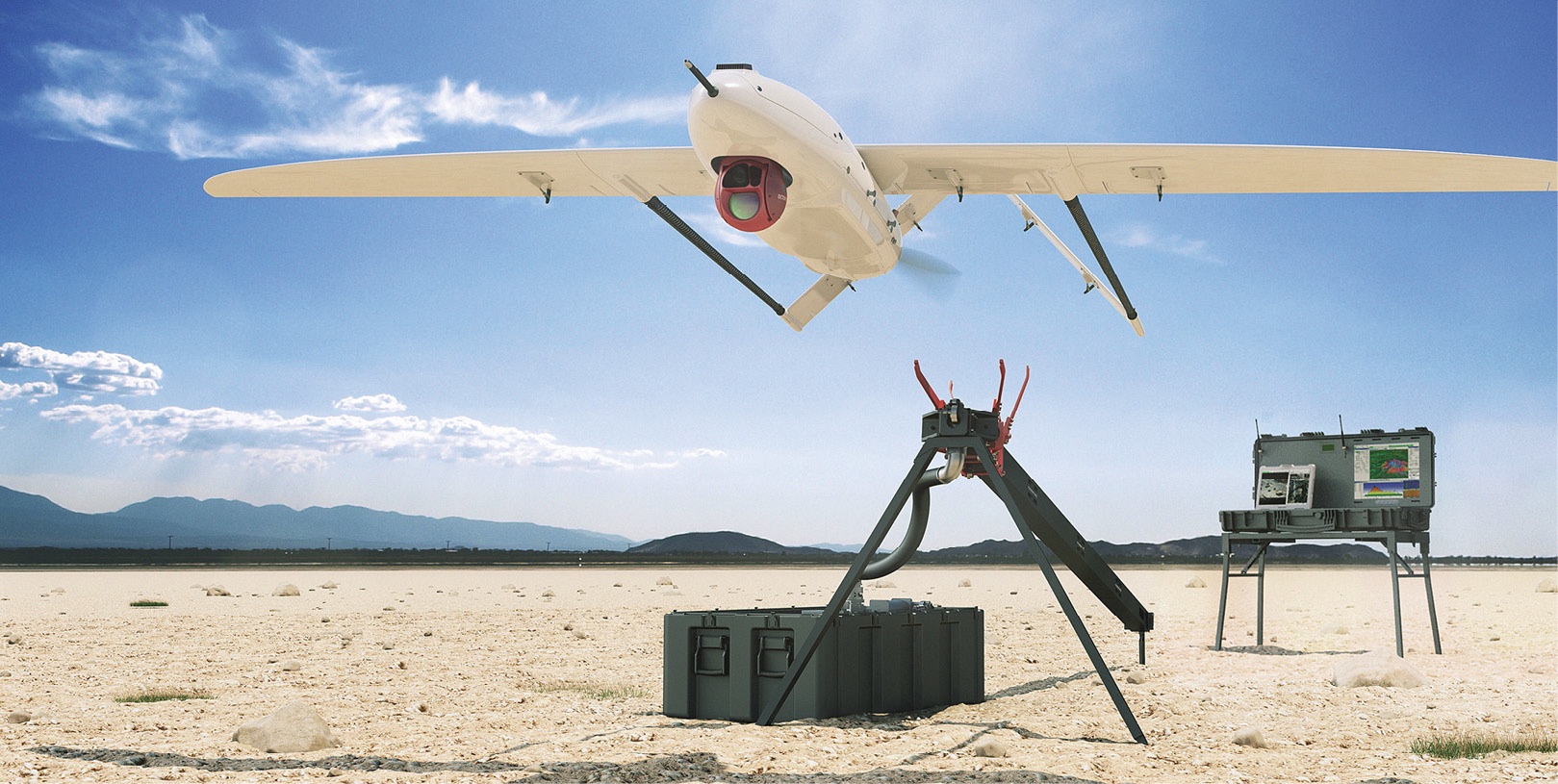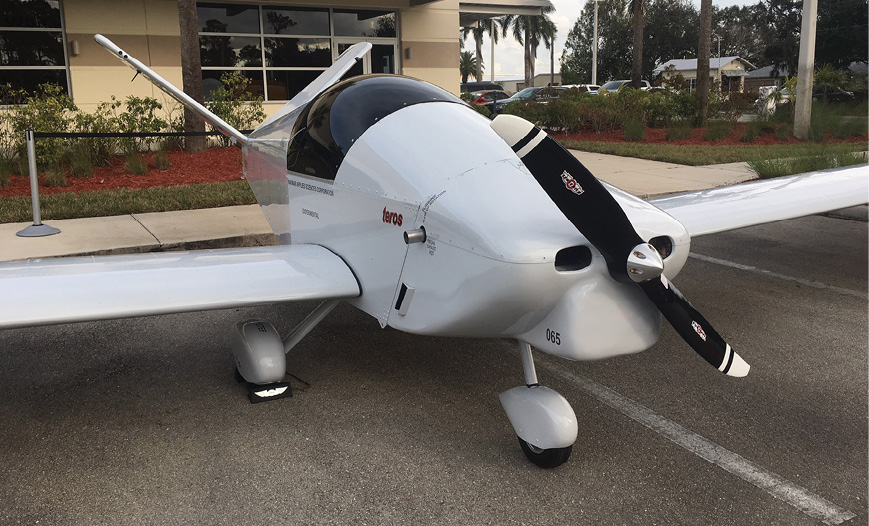
Penguin-C UAS
The Florida Integration Pilot Program (IPP) team, led by the Lee County Mosquito Control District, has shifted away from initial plans to test spraying using the large Teros drone to primarily focus on using drones for surveillance and sterile mosquito release.
When the Lee County Mosquito Control District first submitted its proposal for the Federal Aviation Administration’s new Integration Pilot Program (IPP), the team intended to focus on using unmanned aircraft for surveillance and deploying the 1,500-pound, fixed-wing Teros drone to spray insecticides. After personnel changes and a better understanding of the cost and manpower entailed in implementing such a system, the Florida team decided to shift their focus and is now working closely with the FAA to develop a new plan.
Deploying unmanned aircraft systems (UAS) beyond visual line of sight (BVLOS), over people and at night to monitor areas where mosquitos breed is still part of that plan though largescale insecticide spraying is not. Instead, the team will look into releasing sterile mosquitos into urban environments via smaller drones, as well as possibly spot spraying areas known to have mosquitos.
“We kind of hit reset and are in the planning stages again,” said Eric Jackson, deputy director for public information and education for the Lee County Mosquito & Hyacinth Control Districts. “We’re a little bit behind in comparison to the other teams, but we want to make sure we do this right and that our plan is feasible for what’s probably the smallest agency selected to be part of the IPP program.”
THE FIRST GOAL: SURVEILLANCE AND INSPECTION
During the first phase, the team plans to use drones to surveil and inspect mosquito breeding areas, Jackson said. UAS will fly over tree lines to monitor aquatic vegetation and river quality. And with the ability to fly BVLOS, UAS also could monitor tide flow along barrier islands, where mosquitos breed in the salt marsh.
“The mosquitos lay eggs in the dry salt marsh and when the tide comes, it floods the eggs and starts the process,” Jackson said. “We now monitor that with helicopters. The pilots check for those areas. I don’t ever see us not using helicopters, but it would be more efficient if we could pinpoint some areas by checking the water levels. So instead of flying the entire route, the drone could show problem areas, then we could get an inspector to head out there.”

Teros drone
Using a sensor that targets a specific bandwidth or set of frequencies, drones also might be able to identify algae that serve as prime locations for mosquito breeding, said Dennis King, the FAA team program manager who is working with the Florida group. Today, such inspections require a three-man team to travel by boat to get to the algae. Drones would make this process more efficient, and free up man power for other tasks.
With guidance from Embry-Riddle Aeronautical University, a potential program partner, the district is looking to invest in the Penguin C UAS for the first phase of testing, said Rita Maiss, special projects manager for the Mosquito Control District and a manned aircraft pilot. The long endurance, long range UAS features a catapult launch, which means it can be launched from remote locations without a runway. It comes equipped with a parachute and airbag for landing and takes less than an hour to put together out of the box.
While the team is still solidifying partners and working out the details, the first phase of testing is expected to begin in the spring, Jackson said.
THE SECOND GOAL: STERILE MOSQUITO RELEASE
One of the ways the district plans to control the mosquito population is to release sterile males in urban areas, so when females lay their eggs after mating, those eggs won’t be viable—helping to slash that species’ population, Jackson said. The mosquito they’re focusing on is the Aedes aegypti, which carries Yellow Fever and other diseases. These mosquitos are found in areas with tiny pools of stagnant water, such as bird baths and rain gutters, which traditionally are more difficult to hit with insecticides. Instead of using a moving van to release the mosquitos, a UAS could drop them into residential areas.
“This would involve flying over people and at night,” Jackson said. “But it depends on the technology out there and if we’re able to develop a system to release the mosquitos that works on a drone.”
Mosquitos are starting to become resistant to the insecticides used to control them, Jackson said, making this an even more valuable solution.
Of course, there are many different kinds of mosquitos found in Florida, Maiss said, so using this technique for one species won’t help control the others. Still, having the ability to release sterile mosquitos at night in residential areas that are difficult to spray will help put a dent in the population.

Lee County Mosquito Control District compound
SPOT SPRAYING
Using a small drone to spot spray insecticides is another application the team wants to look into. For example, instead of a manned aircraft going to an island and spraying the entire area, a small UAS can carry a bottle of insecticide and just spray where mosquitos have been identified, King said. This saves the district time and money and gives them more control over their resources.
While the technology isn’t quite there yet, it’s advancing quickly, making this application a possibility in the near future, King said.
There are mangroves in Florida that are difficult to get to, and drones might be able to help the district identify wet areas they didn’t know existed, Maiss said. Once the technology is available, drones also could target specific weeds with insecticide.
“We know we want to use drones for surveillance and to release sterile mosquitos. It remains to be seen how our program will evolve,” Maiss said. “We’re open to possibilities, and spraying aquatic weeds is something we’ve talked about.”
PARTNERS
When the Florida team decided to refocus, they knew they needed to find new partners who could help them reach their goals, Jackson said. It’s critical for the small district to work with companies and organizations that can pull from their experience to help guide them.
They don’t have any partners officially on board yet, but they’re getting close, Jackson said. Other than Embry-Riddle, there’s also been interest from Sky Source Aerial, Iris Automation, Fortem Technologies and Leading Edge Associates. The team is working out the details with each potential partner now and expects to have agreements in place by early 2019.
“Now that we’ve established what we want to achieve, we’re looking at what vehicles are going to allow us to do that,” Jackson said. “The Penguin C could fit the bill for surveillance, then we’ll look at more copter-style drones for insect release. The challenge as we set these different benchmarks is we need to get the personnel in place. We are going to see what experts we can bring in to help us through the remainder of this project.”
MOVING FORWARD
The district always has been active with manned aircraft, flying helicopters in the spring, summer and fall to help manage the area’s mosquito population. That’s one of the reasons they wanted to be involved with IPP, Jackson said. It’s important for them to know how UAS will integrate with their manned pilots so they can better understand how to share the airspace and ensure safety, while also providing the community with an efficient, effective service.
They’re excited to be part of the program and to contribute to moving UAS regulations forward, but now realize how much time and manpower the project involves. Their six manned aircraft pilots just don’t have the time necessary to dedicate to the program, which is why they’re looking to bring in outside pilots to help.
Once IPP is over, the team will continue to operate its UAS program in a way that best serves the community.
“What we do is very important to the quality of life for the people of Southwest Florida,” Jackson said. “Drones certainly could help augment our operation. They do already, as we use them to survey aquatic weeds in line of sight. There’s a lot of potential there. The technology is growing at a fast rate. Who knows how we’ll be using them 10 years from now.”






